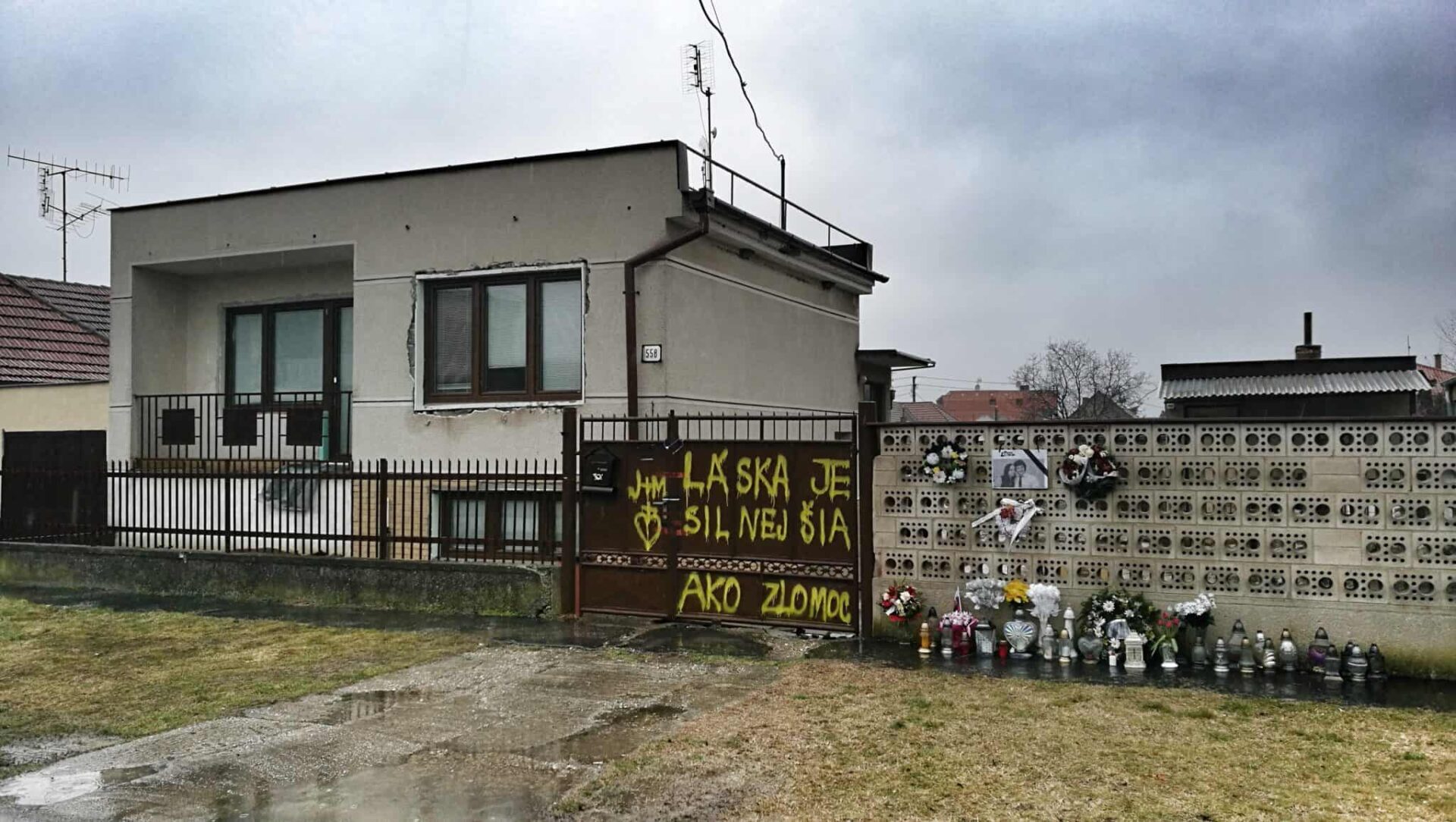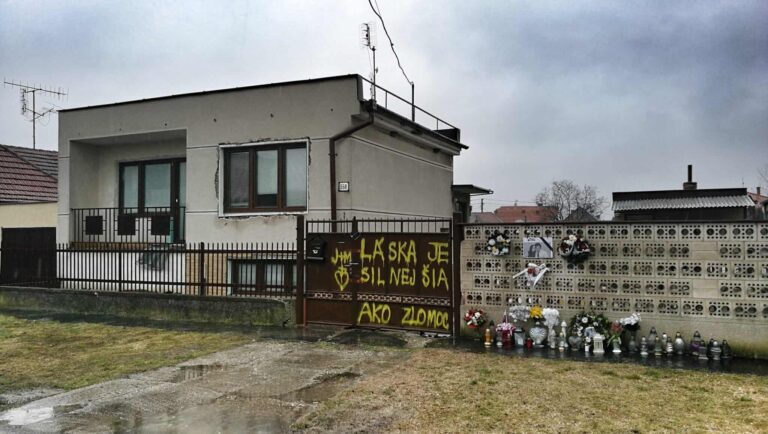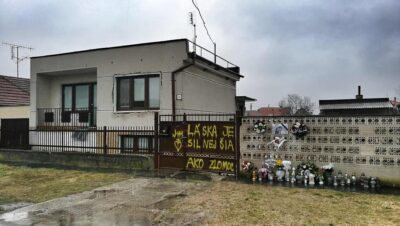The unprecedented trial is nearing the end. On September 3, the Slovak court is expected to announce the postponed verdicts of the three people involved in the murder of Slovak journalist Ján Kuciak and his fiancee Martina Kušnírová. Does the story of the brutal killing mirror the recent history of Slovakia?
Veľká Mača, a village of 2,500 inhabitants, lies at the northern end of the Danubian Lowlands, where Slovak Hungarians outnumber Slovaks. A tenth-century cross was found here, which used to be depicted on the Slovak ten-crown coin. One member of parliament was born here, as was one popular television host. Like many other villages located within a few dozen kilometres from Bratislava, Veľká Mača has become a refuge for Slovaks who work in the capital but do not make enough money to pay high rents or get mortgages for expensive flats. One such Slovak was Ján Kuciak, a young journalist and data specialist, who had a decent, but not spectacular, income from his job at the online newspaper Aktuality.sk. Therefore, he and his fiancée, 27-year-old archaeologist Martina Kušnírová, rented an older house in Veľká Mača––for the same price that they would have paid for a studio apartment in Bratislava. Due to the nature of his work, which involved mainly searching through business registers, land registers, and other databases accessible on the internet, Ján did not have to be in his employer’s Bratislava office every day, but when he did, it was only a few dozen minutes by car.
In late February 2018 the weather in the northern reaches of the Slovak part of the Danubian Lowlands was typical for that time of year: bitingly cold, with day-time temperatures hovering around zero, no snow, and little sun. In short, conditions were perfect for sitting at home and writing.
On the weekend, Ján’s and Martina’s parents tried to get in touch with them. When they did not respond or answer their phones, their parents alarmed the police. The police entered the house in Veľká Mača on Sunday, February 25. Ján Kuciak and Martina Kušnírová were found murdered. Ján had been killed by three shots to the heart, Martina shot execution style in the head. They had already been dead for several days. The police began investigating the crimes as premeditated murders that were somehow related to Kuciak’s work as an investigative journalist. The murder of these two young people rocked Slovakia like nothing else had in the previous 30 years. Their deaths literally changed the country.
Mečiar’s Slovakia, a Mafia State
The history behind why Ján Kuciak and his fiancée died a violent death reaches back to around the time that Ján was born, in May 1990, in the northern Slovak village of Štiavnik with a population of 4,000. Slovakia, then still a part of federative Czechoslovakia, was enjoying its first free spring after the Velvet Revolution of November 1989. Although the government still included members of the Communist Party, the first free elections would be held in early June 1990.
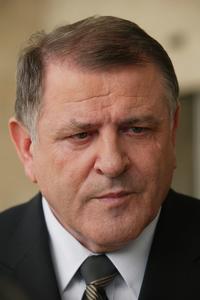
Vladimir Meciar by Péter Kamocsai
One highly visible figure in Slovak politics at that time was Vladimír Mečiar, who before the revolution worked as a factory lawyer despite the fact that in 1970 he had been expelled from the Communist Party like hundreds of thousands of others who had disagreed with the occupation of Czechoslovakia by Warsaw Pact troops in August 1968.
Mečiar, up until that point unknown to the public, became the Slovak minister of the interior under strange circumstances. This position, which gave Mečiar access to the archives of the Communist State Security (StB), the secret police, provided him with priceless opportunities. Mečiar could have his own file kept by the agents of this most repressive of Communist security forces destroyed and the files of others manipulated.
When Ján Kuciak was two, Mečiar, as the head of the Movement for a Democratic Slovakia, won the parliamentary elections in Slovakia. He and Václav Klaus, the winner of the elections in the Czech part of the federation, acting with lightning speed, agreed to split up Czechoslovakia.
On January 1, 1993, on a foggy New Year’s Eve, the Slovak Republic became an independent country led by Prime Minister Vladimír Mečiar. One of the first changes that Mečiar implemented in the legal system inherited from Czechoslovakia was to repeal the lustration law, which barred former StB agents and Communist officials from holding important government positions. Over the next six years, Mečiar attempted to bend democracy to his will so that he could gain as much power as possible in the country and introduce his own system.
In the 1990s Slovakia “privatized” the Communist centralized economy. Whereas the Czechs were at least putting on a show of fairly re-allotting economic resources through “voucher privatization,” in Slovakia, Mečiar left out this “intermediary step.” He did not even allow foreign capital to enter the economy. “We simply divided it up among our people and thus created the foundations of our national capital,” explained to me Ivan Mjartan, the Slovak ambassador to Prague at the time, over a whiskey in his residence in Prague’s Troja neighbourhood. “The result did not differ from that of your [Czech] privatization marked by tunnelling fraud. The thing is that in Slovakia the decisions we made benefited our people,” he continued.
But Mečiar was not content with just splitting up the economy. He placed his people in the courts, he took control of public media, and he tried to eliminate opposition newspapers.
For the dirtiest of jobs, the Slovak secret service, SIS, began recruiting from the ranks of the newly emerging underworld, whose power would gradually grow to approach that of organized crime in the Balkans and the post-Soviet world. In Slovakia, mobsters’ cars would blow up; from time to time someone would shoot up a bar. Murders in broad daylight as a part of gang wars were just becoming a local phenomenon in Slovakia. A strange demimonde consisting of the new business elite, gangsters, and high-ranking politicians was being created. Ján Kuciak, who at the end of the Mečiar era in 1998 was just in second grade, could have had no idea that in 20 years he would be putting his efforts into unweaving a criminal network that had been established when he was in elementary school––and that trying to unravel this web would cost him his life.
Back then, inconvenient journalists were not murdered, but someone might beat them up, set their cars on fire, harass them, or spy on them. Printing presses stopped printing opposition newspapers…
When President Michal Kováč tried to stand up to Prime Minister Vladimír Mečiar, the secret service attacked his son, Michal Kováč, Jr., in August 1995. They beat him and drugged him before stuffing him in the trunk of a car and kidnapping him to Austria. Mečiar hoped that Kováč, Jr., would be turned over to Germany, where he was supposed to face trial for alleged economic crimes related to the Technopol scandal.
When journalists began piecing together what actually happened using the information provided by Oskar Fegyverese, a secret service agent who had fled the country, his connection to the press, former police officer Róbert Remiáš, was assassinated, killed by a car bomb in 1996. Remiáš was 25 years old. By the time the then-six-year-old Kuciak would be the same age, Remiáš’s murderers would still not be punished and none of the president’s son’s kidnappers would be convicted. Their trial should begin this year. In 1998 Mečiar, serving as acting president, granted amnesty to the perpetrators, an act that has recently been declared null and void.
In September 1998, the combined forces of the democratic opposition, led by Mikuláš Dzurinda, defeated Mečiar in the elections. The newly founded private television station Markíza greatly helped them. Mečiar underestimated the station’s influence, and when he wanted to get it under his control before the elections, it was already too late.
It was at this time that Marián Kočner, a “businessman specialized in risk-heavy investments,” appeared on the business and media scenes. With help from a security agency, he attempted to occupy Markíza’s studios and take the station over. He was not successful, but after two years of courtroom battles, under murky circumstances, he would receive a share in the Markíza. For the 35-year-old Kočner, it was his first big score. His main rival was the then-head of Markíza, Pavol Rusko, who in 2003 would become a deputy prime minister in Mikuláš Dzurinda’s second reform government. Ján Kuciak, Kočner’s future victim, was eight.
The Reformers’ Gorilla and Fico, the European
For nearly the next 20 years Slovakia would try paying off the debts it had run up under eight years of Mečiar’s mafia state. But it was no easy task, with a corrupt judicial system with judges who could not be recalled, the nouveau riche who had acquired massive amounts of property thanks to Mečiar’s privatization, the incompetent and corrupt police, and powerful mafia structures. But even the new ruling parties needed sponsors; instead of privatization, though, there were lucrative government contracts and other possibilities for making money at the expense of the state.
In order for people to begin paying taxes in the country, Slovakia introduced a very low flat tax. It attracted foreign investors. On the surface, Slovakia was becoming civilized, but underneath––the people, the business dealings, the way things were done––nothing had changed.
The reform government of Mikuláš Dzurinda, the prime minister who was much admired in the West and who in 2004 led Slovakia into the EU and, a few years later, into NATO, was crushed by the incredible “Gorilla scandal.” It involved hours and hours of wiretapped conversations held in a safe house used by the head of the Penta investment group, Jaroslav Haščák. There was information about dozens of meetings with prominent politicians serving in the reform government, business dealings that were at the expense of the state, money trickling into parties’ slush funds, and corruption. When the alleged transcripts of the conversations overheard by the secret service were first published in December 2011, it was an enormous shock. Thousands of angry protestors demonstrated in Bratislava. At the time, Ján Kuciak was studying journalism. As of today, the Gorilla scandal has still not been fully investigated.
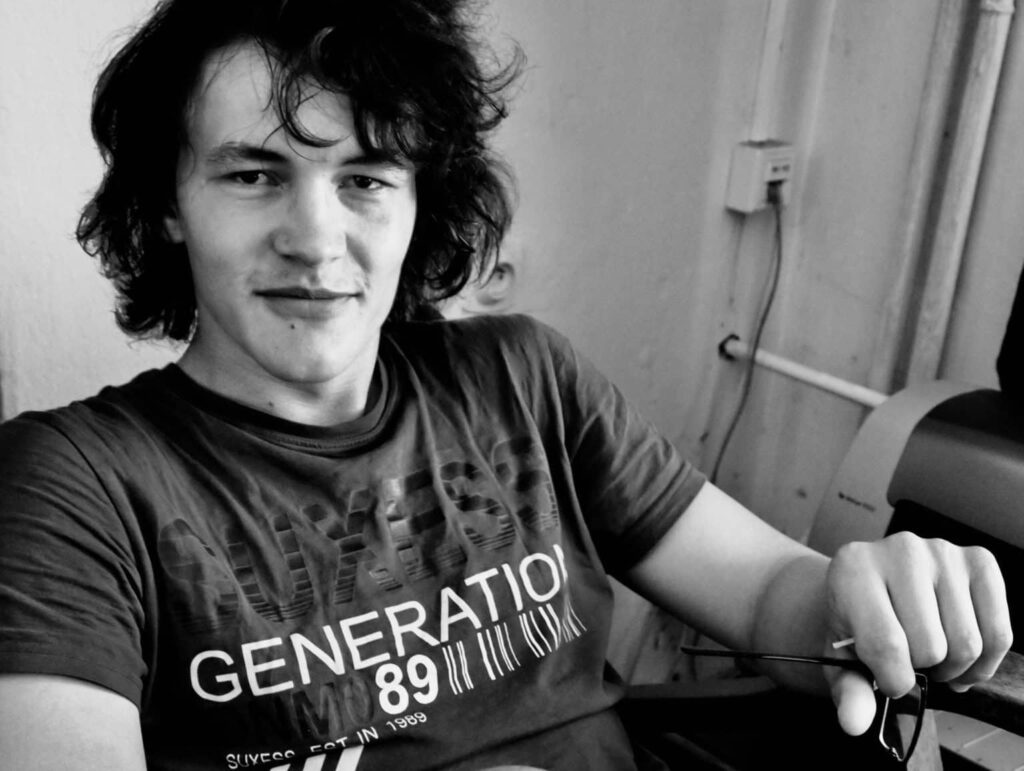
But when the Gorilla scandal erupted, Dzurinda and his people were already long past their prime. A new star had risen on the political scene: Robert Fico. As a young man he was a Communist, before becoming a talented populist and eventually a Social Democrat. His party, Smer, came to power in 2006, when it formed a coalition government not only with the still-lingering Mečiar but also with the xenophobic Slovak National Party. But along with them came their “business backgrounds,” that is, businessmen who were used to good “dealings” with the government in exchange for “support” for ruling politicians.
For the West, Fico donned the mask of a “pro-European” politician and to the wonder of all of Europe, on February 1, 2009, Slovakia adopted the euro, the second of the new Member States to do so. Typical of Slovakia, it was accompanied by scandal. Fico’s minister of finance, Ján Počiatek, spent several days before the announcing of the fixed exchange rate of the Slovak crown to the euro with several Slovak billionaires on a yacht in Monaco. “Surprisingly,” they all made a lot of money when the euro was adopted.
But Počiatek withstood the pressure and stayed in politics until 2016. Today, he lives in a gigantic mansion in one of the most expensive parts of the French Riviera.
After the Gorilla scandal, in the spring of 2012, Fico became prime minister again, after his Smer won an absolute majority of parliamentary seats in the election. He had ambitions to become president, and in 2014 he almost met his goal. The opposition was divided and fighting among itself. Dzurinda and his people had disappeared from the scene. Fico had no political opponents.
But something had changed in Slovakia. People were fed up with the strange game of pretending to be fair and honest and that Slovakia was a welfare state. In spring 2014 the political matador Fico received a sensational blow when he was defeated in the presidential elections by political novice Andrej Kiska, a businessman and philanthropist.
Kiska tapped into the moral tradition of the first post-Velvet Revolution president, Václav Havel. For many Slovaks, Kiska was the exact opposite of the now-melting Fico. And he instilled courage.
A new generation of “European” Slovaks was coming of age and with them a new generation of journalists like Ján Kuciak, journalists who began unravelling the networks of corrupt politicians, businessmen, and now semi-legitimate gangsters that had existed for decades. However, the old “Mečiarism” was alive and well, except instead of privatization and government contracts there was a new cash cow in town: European funds. Hundreds of millions of euros, grant kickbacks, shady dealings with agricultural subsidies, land fraud––the scandals kept adding up even though there was a new, less corrupt generation of judges, prosecutors, and law enforcement officials.
Ján Kuciak was already a journalist, but he was no first-magnitude star. His articles about corruption and fraud got right to the heart of matters. They were, however, complicated, just as the reality that this “data journalist” reported on. Tax fraud covered up by politicians from the ruling party of Smer, shady dealings with EU subsidies. He left the newspaper Hospodárske noviny for a somewhat better job at Aktuality.sk, but his name did not mean anything to anyone, except for a few select people. That is, until that February night in 2018 when he was found murdered alongside his fiancée in Veľká Mača. He and Martina were 27 years old. Vladimír Mečiar, who was nearly 80 at the time, was enjoying retirement as a multimillionaire in the mountains of central Slovakia.
A Murder that Overthrew the Government
In the days following the murders, the investigation seemed to have been put on ice, but when Ján Kuciak’s final incomplete article was published, it caused a political whirlwind. His employer, Aktuality.sk, made it available several days after his death. It describes how Prime Minister Robert Fico had appointed his former lover, who had ties to the Italian mafia and was then in hiding in east Slovakia, chief government advisor state secretary at the Office of the Government and his “chief mistress.” It also reports on how the Italian mafia was engaging in widescale abuse of EU subsidies for its agricultural companies and how organized crime had permeated the agricultural industry with the help of high-ranking government officials. “The article had no conclusion. The author never finished it,” is how the report ends.
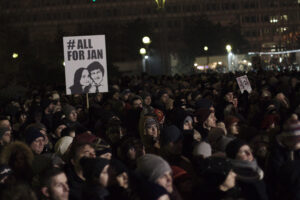
Photo by Peter Tkac | Demonstration in Bratislava, March 2nd 2018 | Flickr | CC BY-SA 2.0
Slovakia, a country of five million people, then experienced the largest protests since the fall of Communism. Hundreds of thousands of people took to the streets not only in Bratislava but throughout all of Slovakia. During a press conference at the seat of the government, Fico displayed one million euro in cash in front of television cameras, declaring that it was the reward for finding the killers. He also condemned the murders as “an unprecedented attack on press freedom and democracy in Slovakia.” A few days later in March 2018, when Most-Híd, a smaller coalition party, confronted Fico, President Kiska demanded the resignations of Fico and several of his ministers. Peter Pellegrini, the more credible deputy chairman of Fico’s Smer, became the new prime minister. The government coalition survived the affair.
But for months the police investigation seemed to be at a dead end. Although a member of the Italian mafia with connections to Fico was arrested and turned over to the Italian police, who wanted him for drug smuggling, the trail leading to the Italian mafia went cold. The police were talking about a professional hit job, and it seemed as if the perpetrator had gotten away with it. In August 2018 an open letter signed by 300 Slovak journalists was published. “Considering the fact that after the murder, fundamental changes in law enforcement and the public prosecutor’s office have not been made, it is impossible for us to have great trust that any real investigation will occur,” wrote the journalists, who knew very well what kind of country they were living in.
The Murderers and Their Employers
But in September 2018 a major break in the case came. The police issued a sketch of one of the perpetrators. Not long afterwards, eight people connected to the criminal underworld in southern Slovakia, led by former police investigator Tomáš Szabó, were arrested. Another of the apprehended included former professional soldier Miroslav Marček, who in the spring of 2019 would confess to the murders. Another person arrested was Alena Zsuzsová, an interpreter, who ordered the murder and paid 70,000 euro for it. But it was not her money. She remained silent about who had actually ordered the hit.
The trail seemed to lead to her connections with Marián Kočner, for whom she had worked not only as a translator but also as a “honey trapper,” who was supposed to discredit top-ranking politicians. Kočner’s name had long been on the list of those who had threatened Kuciak. In 2017 Kuciak filed a criminal complaint against Kočner after Kočner threatened him over the phone due to an article he was working on about Kočner’s “business activities”: “I am going to mainly concentrate on you, your mother, your father, your siblings.” The police refused to do anything about it and did not offer Kuciak a security detail.
Despite a lack of evidence, Kočner was detained. But it was due to a scandal linked to the former head of Markíza, Pavol Rusko–yes, the same Pavol Rusko with whom Kočner had fought over the station in the late 1990s. They were suspected of forging promissory notes from Markíza worth 250 million crowns (about 8 million euros). During the trial, which ended in February 2020 with both Kočner and Rusko being sentenced to 19 years, Kočner was accused in Ján Kuciak’s case. Indirect evidence that he ordered the murder came from decrypted text messages from his mobile phone. The messages from Kočner’s “Threema,” the name of the heavily encrypted messaging app he used, read like political and criminal pornography and were published by all Slovak media outlets. Kočner, after nearly 30 years as an important member of the Bratislava demimonde that brought together politics, business, and organized crime, had eyes everywhere that helped him make money and ensured his impunity. He had “his” people and “friends” everywhere––in politics, in the courts, in the public prosecutor’s office, among Slovakia’s billionaires, including the “star” of the Gorilla scandal, billionaire Ján Haščák. Also, it just so happened that the original recordings of the Gorilla wiretaps were found in Kočner’s safe.
Slovaks were horrified to learn just how much organized crime and cronyism had permeated their country, and as a result, on February 29, populist Igor Matovič and his Ordinary People party, running on an anti-corruption campaign, won the parliamentary elections by a landslide. It was the Gorilla scandal protests ten years before that had given birth to Matovič’s political career. Now, he had won the elections by going to the French Riviera and shooting a YouTube video in front of the mansion of former minister of finance Ján Počiatek. Yes, the same Počiatek on the yacht before the adoption of the euro in summer 2008. In the video, Matovič hangs a sign on the gate of the mansion saying that it is the property of the Slovak Republic. It has been half a year since the elections, and nothing has happened.
Catharsis or Another Failure?
Now that investigators have access to Kočner’s telephone, many prominent people in the Slovak judiciary and business will be accused of crimes, and many of them will go to prison. The trial of Zsuzsová, Kočner, and Szabó is nearing the end. The triggermen, Miroslav Marček and Zoltán Andruško, against whom there is direct evidence, cooperated and, in separate trials, struck deals with prosecutors for shorter sentences, 23 years and 15 years, respectively.
In late July, hearings in the trial of Kočner, Zsuzsová, and Szabó came to an end. Kočner and Zsuzsová maintained their innocence, claiming that someone else ordered the murders and that those people are still free. The prosecutor proposed both receive 25 years; defense lawyers requested the case be dismissed due to a lack of evidence. The court announced that it would issue a verdict on August 3. But just a few hours before the verdict was to be read, the court rescheduled the announcement for a month later. All of Slovakia is frozen in shock. The wheels of justice have stopped turning once again. Slovakia, which had seemed to be different now, may stay the same. On the night of August 3, people placed candles and flowers at the small, unofficial memorial to Ján and Martina, adorned with their pictures, in the heart of Bratislava.
P.S. Similar histories could be written about the last several decades in pretty much every country in post-Communist Europe. The only difference is that in those countries journalists haven’t been killed. At least not yet.
The author is an editor at Deník.
This article is published as part of a project to promote independent digital media in Central and Eastern Europe funded by the National Endowment for Democracy and coordinated by Notes from Poland.

